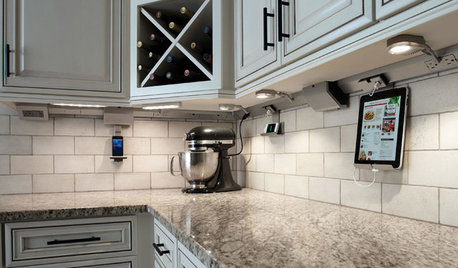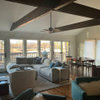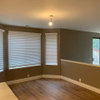low-voltage pucks causing radio interference
Bunny
12 years ago
Related Stories

LIGHTINGThe Lowdown on High-Efficiency LED Lighting
Learn about LED tapes, ropes, pucks and more to create a flexible and energy-efficient lighting design that looks great
Full Story
DECORATING GUIDESChinoiserie Sends Rooms on Flights of Fancy
Gilded, lacquered or delicately detailed, decor pieces with fanciful Chinese motifs convey an exotic, well-traveled spirit
Full Story
LIGHTINGWhat to Know About Switching to LED Lightbulbs
If you’ve been thinking about changing over to LEDs but aren't sure how to do it and which to buy, this story is for you
Full Story
HOUSEKEEPINGWhat's That Sound? 9 Home Noises and How to Fix Them
Bumps and thumps might be driving you crazy, but they also might mean big trouble. We give you the lowdown and which pro to call for help
Full Story
LIGHTING5 Questions to Ask for the Best Room Lighting
Get your overhead, task and accent lighting right for decorative beauty, less eyestrain and a focus exactly where you want
Full Story
ARCHITECTUREHave Your Flat Roof and Your Snow Too
Laboring under the delusion that flat roofs are leaky, expensive and a pain to maintain? Find out the truth here
Full Story
KITCHEN DESIGN20 Kitchen Must-Haves From Houzz Readers
We asked you to tell us your top kitchen amenities. See what popular kitchen features made the list
Full Story
GREAT HOME PROJECTSMake a Push for a New Doorbell
Is it time to replace a doorbell or even add a door intercom or video system? Installation may be easier than you think
Full Story
HOME TECHThe Inevitable Future of Drones Around Your Home
As Google joins the push for airborne deliveries, it seems only a matter of time before neighborhoods are buzzing with drones. Is that OK?
Full Story
KITCHEN DESIGN7 Awesome Add-ons for Kitchen Cabinets
Useful gadgets, docks for your devices, extra lighting ... when it comes to cabinets, do look down
Full StoryMore Discussions











David
BunnyOriginal Author
Related Professionals
Glendale Lighting · Whittier Lighting · Peachtree City Furniture & Accessories · Phoenix Furniture & Accessories · Wichita Furniture & Accessories · Discovery Bay Furniture & Accessories · Miami Beach Furniture & Accessories · Fort Smith Interior Designers & Decorators · Gloucester City Interior Designers & Decorators · Sweetwater Interior Designers & Decorators · Crystal Lake Decks, Patios & Outdoor Enclosures · Hockessin Decks, Patios & Outdoor Enclosures · Lincolnton Decks, Patios & Outdoor Enclosures · Mastic Decks, Patios & Outdoor Enclosures · Oak Ridge Decks, Patios & Outdoor Enclosuresbrickeyee
BunnyOriginal Author
flyfly
David
BunnyOriginal Author
David
brickeyee
BunnyOriginal Author
Johnw1965
brickeyee
attofarad